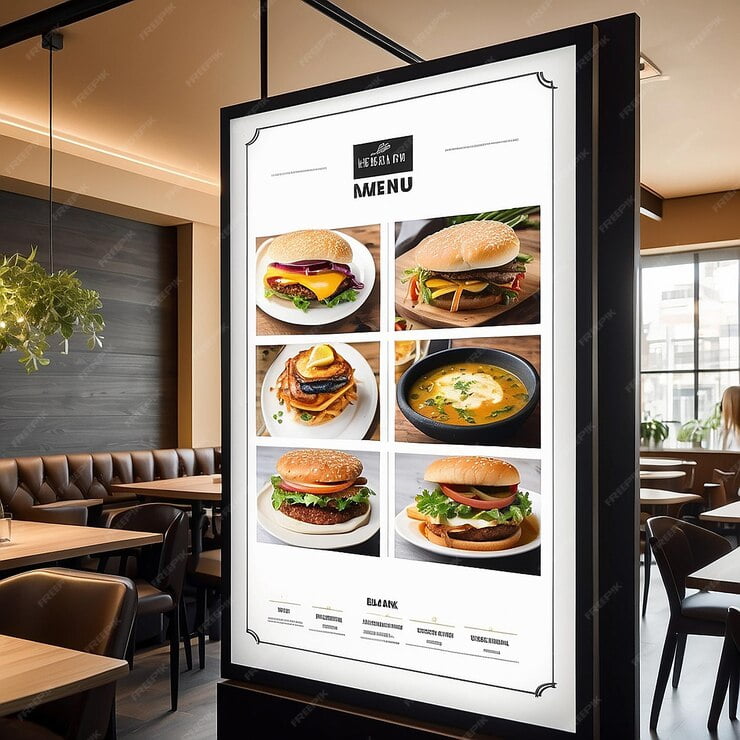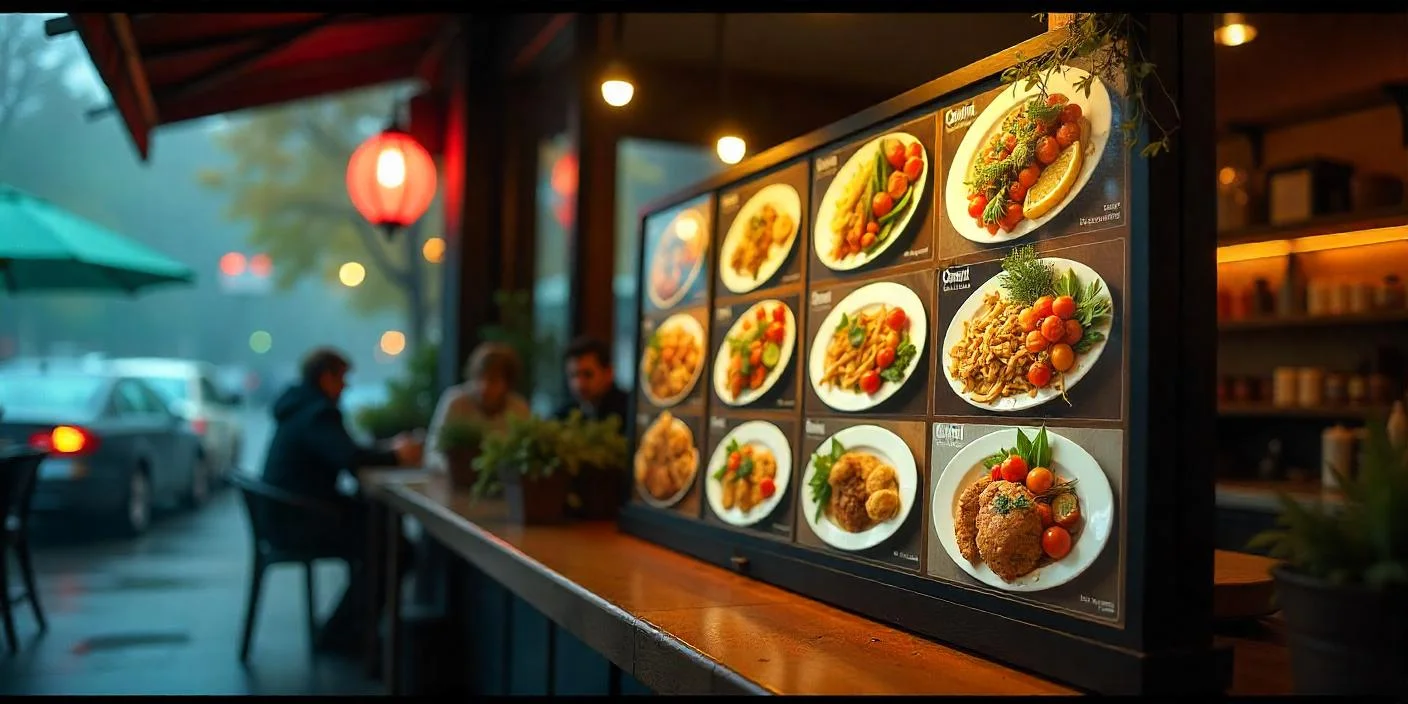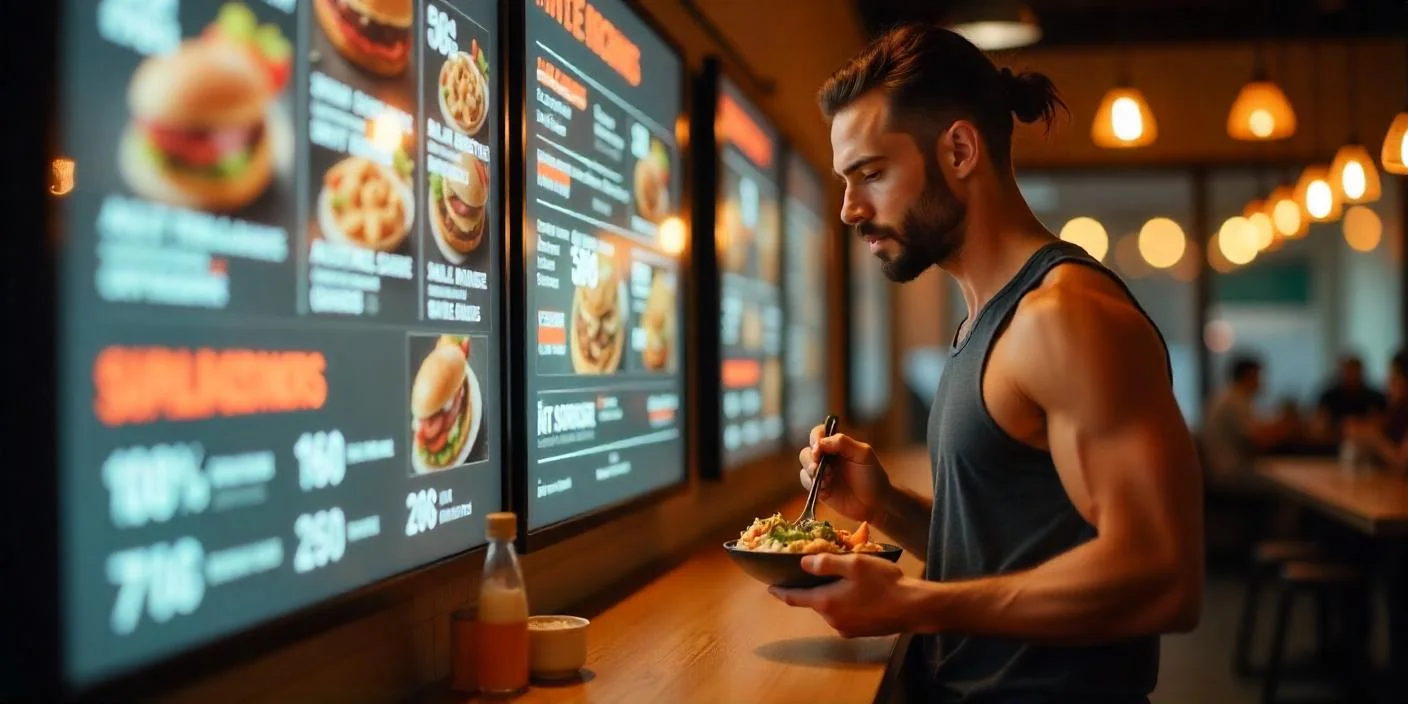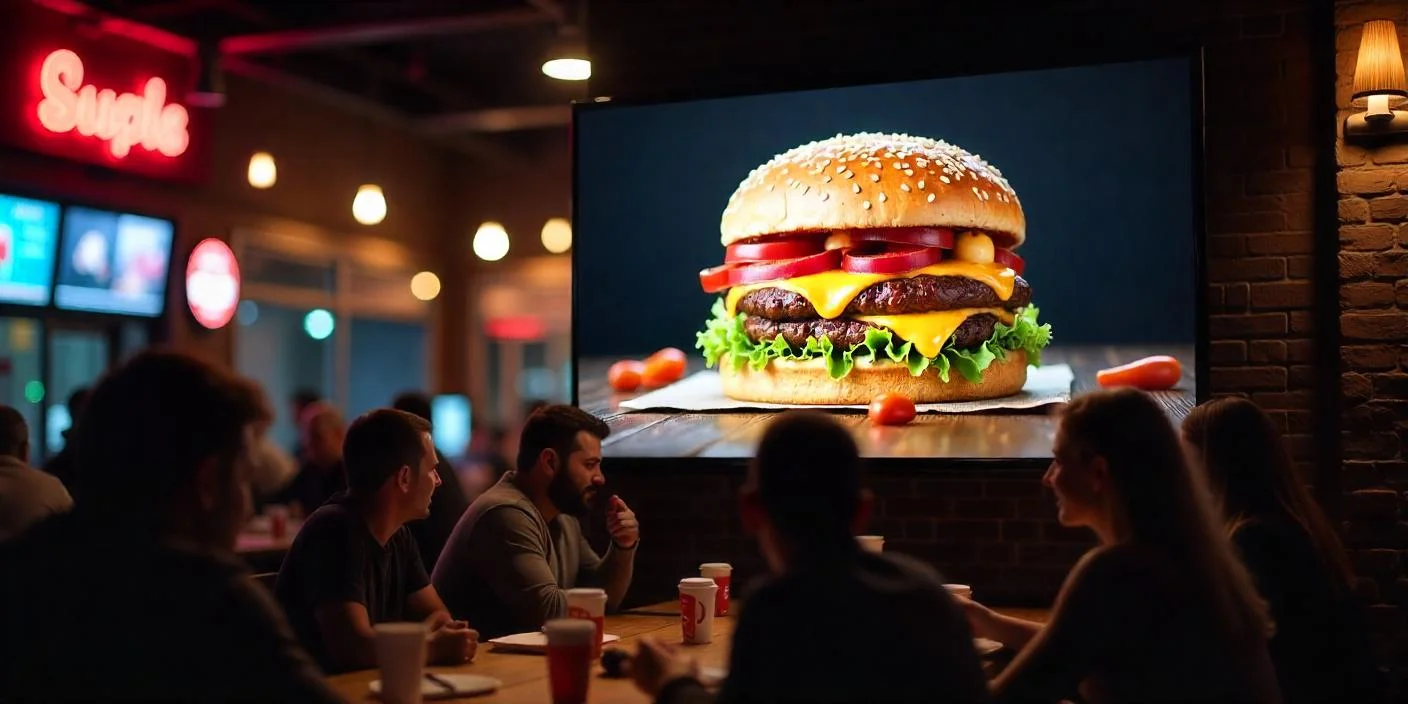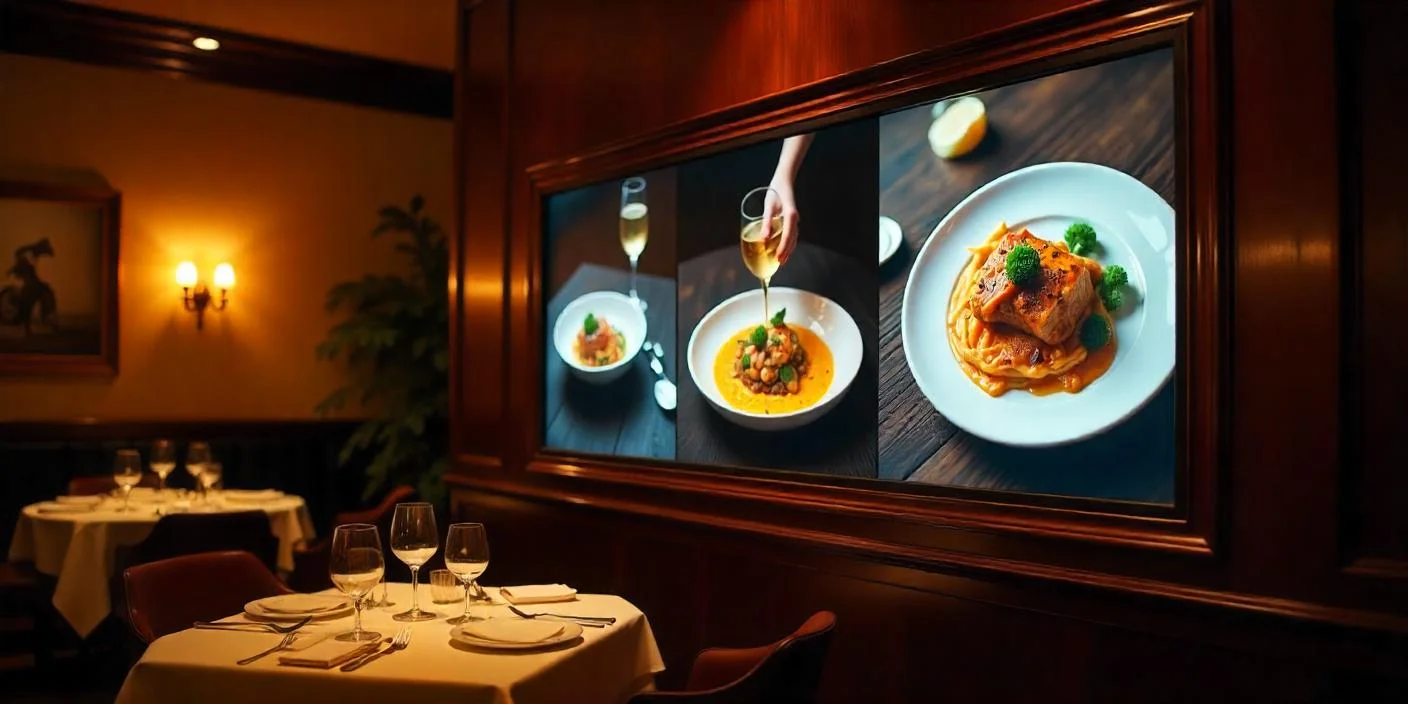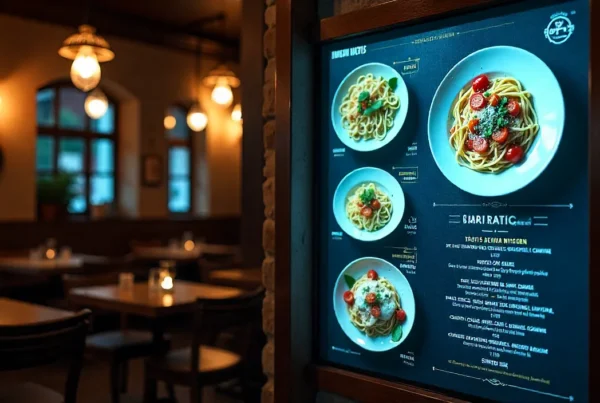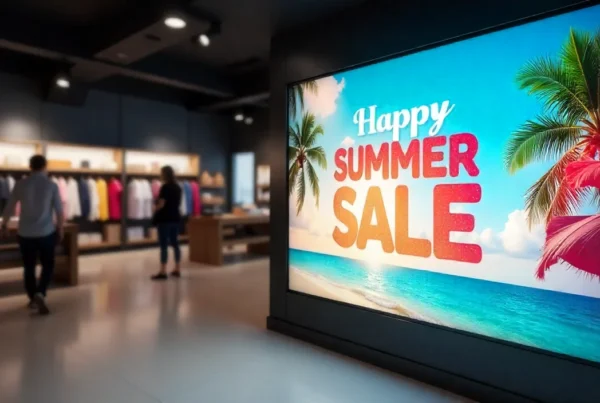In this constantly changing hospitality industry, it is not only about outstanding food to deliver memorable dining experiences. The modern guests are in need of immersion, convenience, and a hint of technological sophistication. Welcome to the world of digital display screens for restaurants: the mute diplomat that transforms the way the clients communicate with your space. One digital display allows you to present your digital menu, communicate your promotions, and share your brand story, all without using paper and manually updating it.
The Shift Towards Digital in the Restaurant Industry
The world of restaurants is dashing towards technological adoption. Digital innovations have been integrated into all operations, including online reservations, mobile ordering, etc. Digital display solutions for restaurants are leading to this change, as they allow restaurants to change the content of their signage dynamically and customize it. Embracing a digital display screen in business use helps establishments provide real-time information, encourages customers to stay involved, and stand out in a competitive market.
Understanding Digital Display Screens
What Is a Digital Display Screen?
A digital display screen is an electronic screen where multimedia content, images, and text- are displayed within a moving, attractive format. These screens, unlike a printed poster or a chalkboard, react to any strategic changes in real time, allowing chefs and managers to update menus and promotions using any web-connected device.
Types of Digital Display Screens for Restaurants
The restaurants have options of using wall-mounted menu walls, freestanding kiosks, window-facing screens, and outdoor rated boards. Digital display for restaurants could consist of a drive-thru menu board that has 1,500+ nits of brightness that will show up in direct sunlight or an indoor display that will fit your aesthetic and be connected to your POS system to automatically update the prices in real time. All form factors present special benefits based on workflow, space, and audience.
The Power of Digital Menus
Replacing Traditional Paper Menus
By switching to a digital menu, printing will be done away with, and the waste will also be done away with. Nobody has to wait on graphic designers and reprint menus every time the prices change. Digital display for restaurants changes in real time, making it accurate and consistent across all locations.
Active and Interactive Menus
Interactive screens are opened to customers, where they can go through the ingredients, filter on dietary preferences and see add-ons. A digital menu that uses touch can upsell sides or specials at the point of decision and increase average ticket values without taking any control away from the guest.
Creating Immersive Ambiance with Digital Displays
Visual Storytelling
A digital display placed strategically will be able to feature behind-the-scenes kitchen footage, an interview with the chef, or a story behind local produce. This visual narrative enhances brand engagement and makes the diners feel occupied in between their meals.
Advertising Seasonal Deals
When it comes to restaurants with digital display solutions, seasonal menus and limited-time offers are automatically rolled out. Change to autumn harvest specials or holiday menus with a click of a button, create impulse orders, and keep your concept fresh.
Boosting Operational Efficiency
Real-Time Menu Updates
It can be used to show sold-out products or to make changes to the digital display screen of the restaurant’s pricing to keep up with cost changes and ensure that errors and labor are reduced. Edits are made centrally in the cloud by the managers, and screens are refreshed immediately- no ladder and tape needed.
Efficiency of Communication with Staff
In addition to the guest content, the digital display can be utilized as an area of internal messaging. Use back-of-house screens to post-shift schedules, safety reminders or cleaning checklists to update your team without disrupting service.
Enhancing Customer Engagement
Interactive Screens for Self-Ordering
Digital display self-service kiosks in restaurants lessen long queues and allow employees to have closer personal contact with the customers. Customers order and customize what they want directly on a touchscreen and even pay without having to queue at the counter.
Amusing Waiting Guests
Displays in the lobby or the bar area can be used strategically to run trivia, previews of events or live social media. This helps to keep the guests occupied in peak hours and is a way of advertising specials or loyalty programs.
Digital Display Solutions for Different Restaurant Formats
Quick Service Restaurants (QSR)
In quick-service restaurants, digital display screens highlight combo offers, time-limited burgers, and proms that are time-bound. Restaurant digital display screens are high-bright screens that help to cut down perceived waiting time with bright, continually looping content.
Fine Dining Restaurants
Fine-dining restaurants have taken advantage of the inconspicuous and classy digital panels to display wine menus, chef-tasting menus, or beautiful videos of the dishes-adding a sense of sophistication without sacrificing the ambience.
Cafes and Bistros
The casual cafes integrate digital display screen that allow restaurants to rotate breakfast specials, advertise community events or show loyalty rewards to give the place a warm but contemporary feel.
Design Considerations for Restaurant Digital Displays
Screen Placement and Visibility
Place screens at eye level and do not have glare of windows or lights. Indoors, digital display units use anti-glare coating, whereas outdoors, digital display models should have weatherproof housing and high-nit panels to enable them to be read in direct sunlight.
Content Design and Readability
Fonts should be large and easily legible, and color schemes should have high contrast to be easily readable at a distance. Do not overload with text; concentrate on high-impact images and minimalist messages to take guests through the digital menu as quickly as possible.
The ROI of Investing in Digital Display Screens
Cost Savings over Time
Although the initial investment in digital display in restaurants might be more than that of printed material, the fact that no more print charges are incurred and that personnel time spent on manual updates is reduced grants significant savings over the lifetime of the system.
More Upselling Possibilities
Dynamic and interactive digital display solutions for restaurants recognize and emphasize high-margin products at optimal times- generating incremental revenue that can pay off quickly.
Choosing the Best Digital Display Screen for Restaurants
Key Features to Look For
Choose commercial-grade durability, 4K resolution, viewing angles and superior software compatibility. Search for in-built scheduling, remote control, and analytics to monitor engagement and plan future content approaches.
Durability and Maintenance Facility
Digital display screens used outside should have IP65 protection, anti-glare glass, and temperature tolerance. Indoor units must be readily cleanable and have replaceable modular parts to minimize downtime.
Integrating Digital Displays with Other Technologies
POS System Integration
A smooth integration of your digital menu displays and POS will make sure that prices and menus are updated in real time. This combination cuts down on order errors and synchronizes sales data to analyze it in more detail.
Analytics and Loyalty Programs
Combine the use of a paired digital display screen with restaurants, CRM, and loyalty platforms that will allow you to offer personalized offers on-screen. Keep track of most-viewed items, dwell time and upsell success to optimize the content on an ongoing basis.
Success Stories: Restaurants Thriving with Digital Displays
From busy food halls in the urban setting to high-end restaurants in hotels, restaurants that use digital display screen technology indicate increased satisfaction among their guests, improvement in the running of the establishment and an increase in their sales, which is quantifiable. The case studies highlight the revolutionary effect of the current digital display solutions for restaurant industry.
Future Trends in Restaurant Digital Displays
AI and Personalization
The next generation of digital display systems will use AI to personalize content, making recommendations based on previous orders or even current weather.
AR Menus
Digital menus with AR enable guests to see dishes in 3D before ordering and feel more confident and excited.
Sustainability-Focused Displays
New environmentally friendly digital display screen displays in restaurants will include low-power settings, recyclable materials, and energy-harvesting capabilities in order to comply with green standards.
Ready to Transform Your Restaurant with Digital Displays?
Nento digital display solutions will help you improve guest experiences, operation efficiency, and revenue in restaurants. Call us now to learn more about the best digital display screen in restaurants, see a demonstration, and/or discuss custom integrations- since the future of dining is in the technology of today.
FAQs
What makes a digital display screen for restaurants different from a regular TV?
Unlike consumer television sets, commercial digital display screens are brighter, more durable, remotely manageable, and feature food-service-related software.
Are outdoor digital displays reliable in harsh weather?
Yes–outdoor models are IP65, waterproof, and can be viewed in direct sunlight and extreme weather conditions.
How do I measure ROI on digital displays?
Tracked reduced print expenses, employee time and progressive upsell. The built-in analytics indicate engagement rates and conversion factors.
Can I integrate my existing POS with digital menu screens?
The majority of the current solutions in the restaurant digital display market are compatible with a smooth integration of POS, which will keep the prices and the inventory synced in real time.
How often should I update on-screen content?
Shoot to refresh the content once a week at locations with high traffic. Scheduling is automated, and an update can be performed by simply uploading new assets to the CMS.

